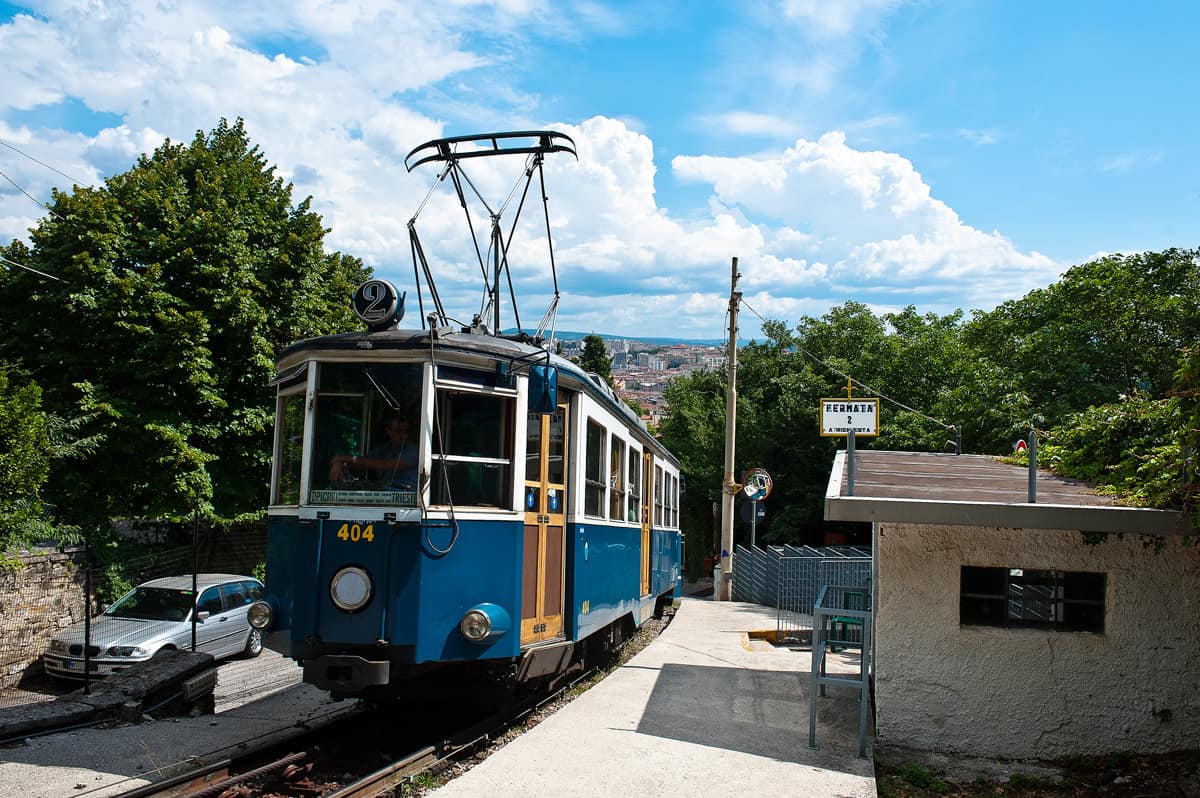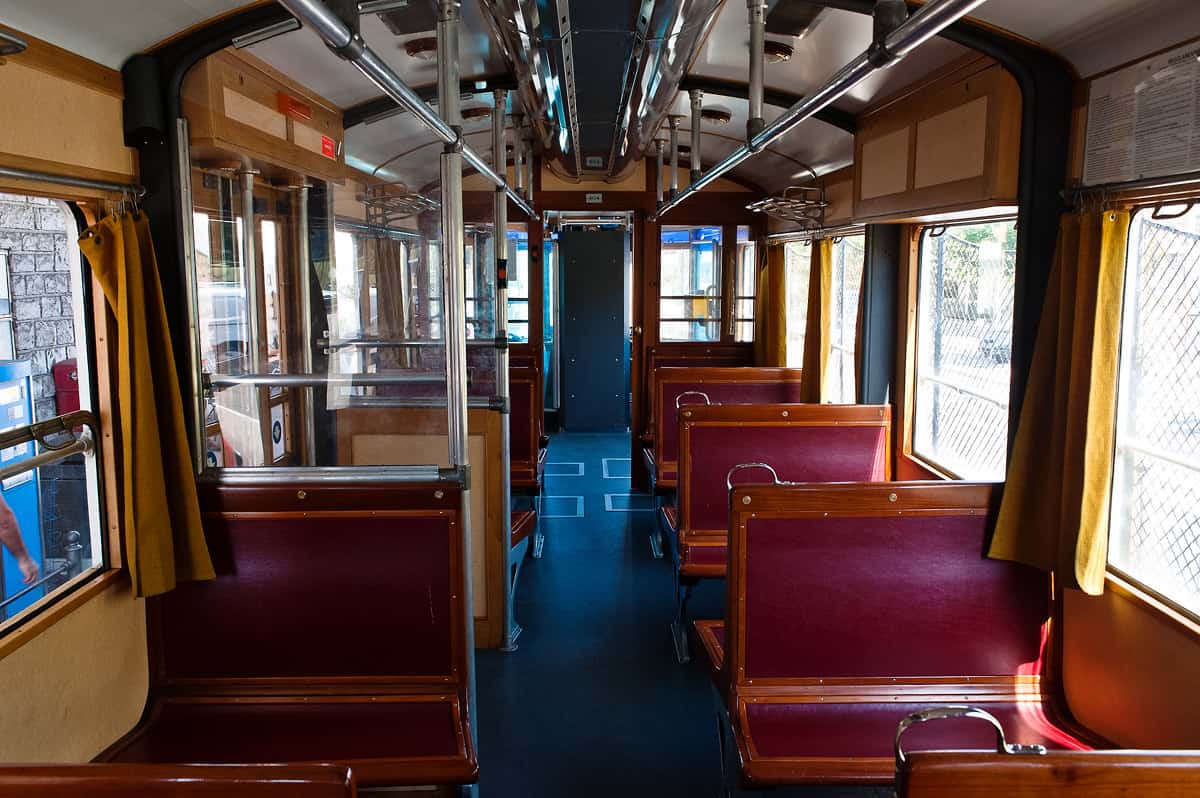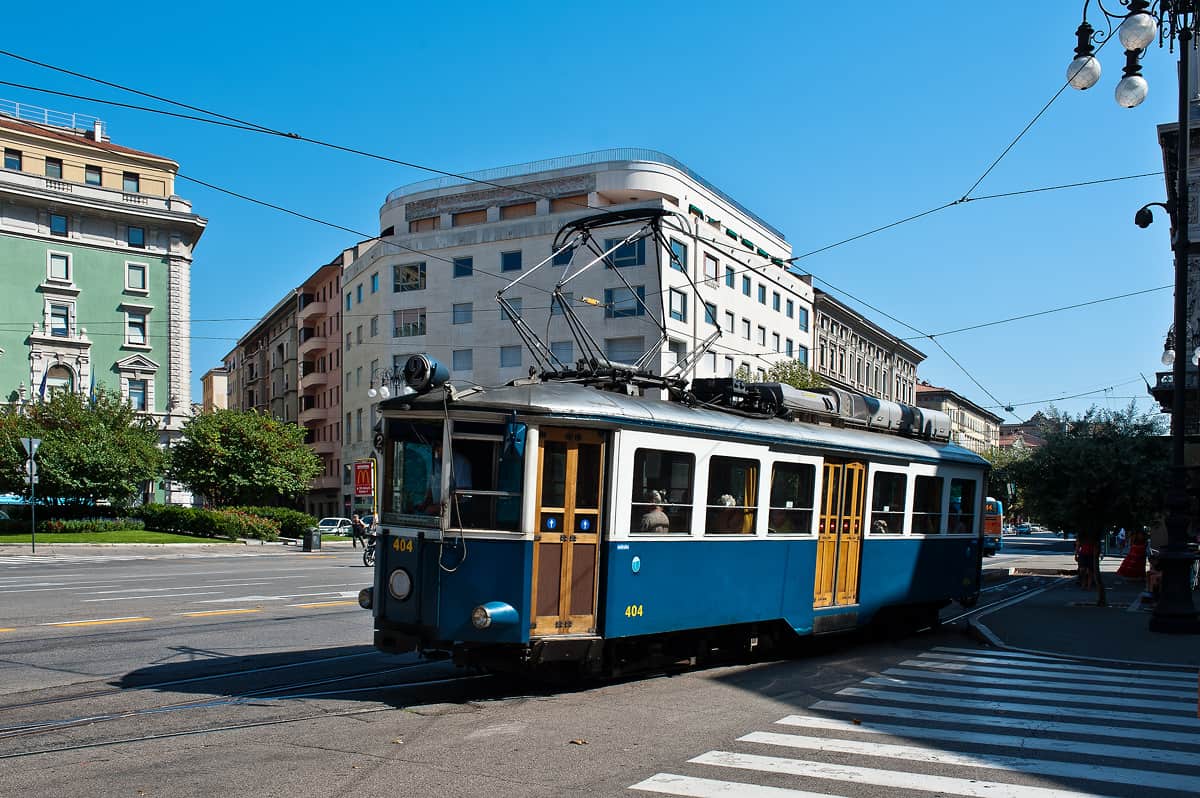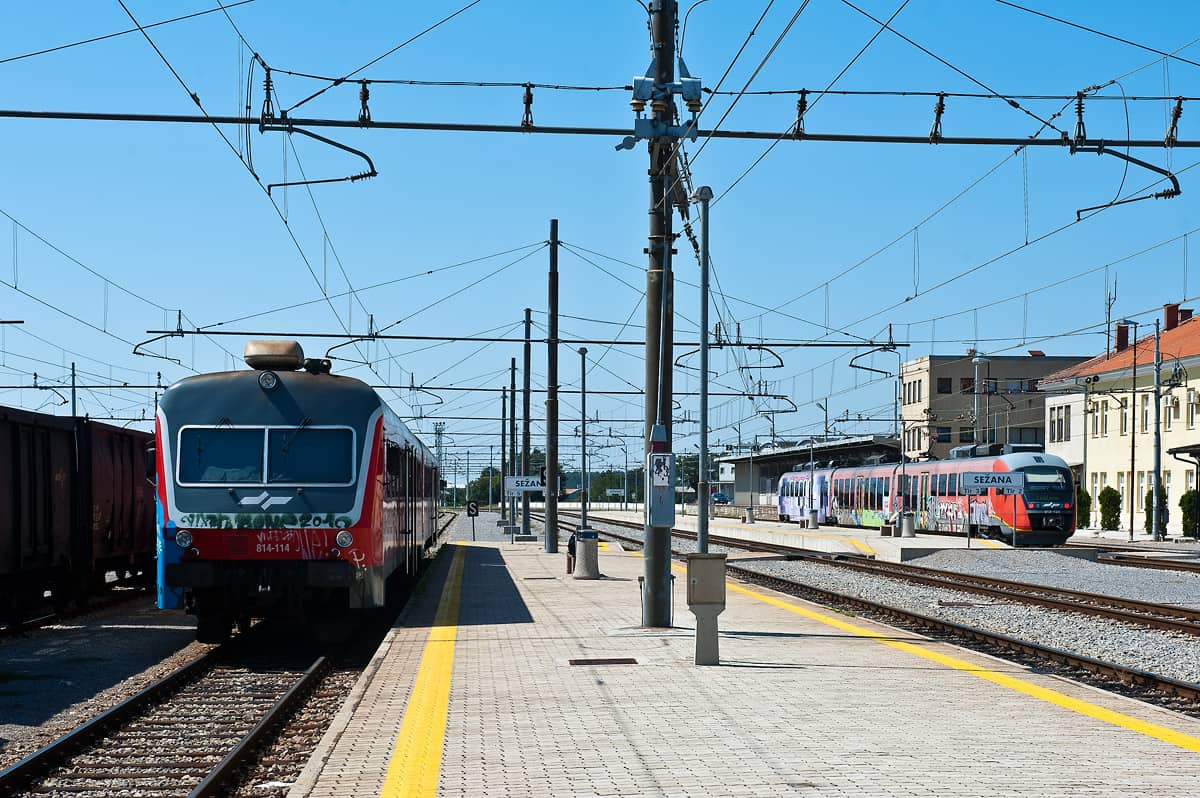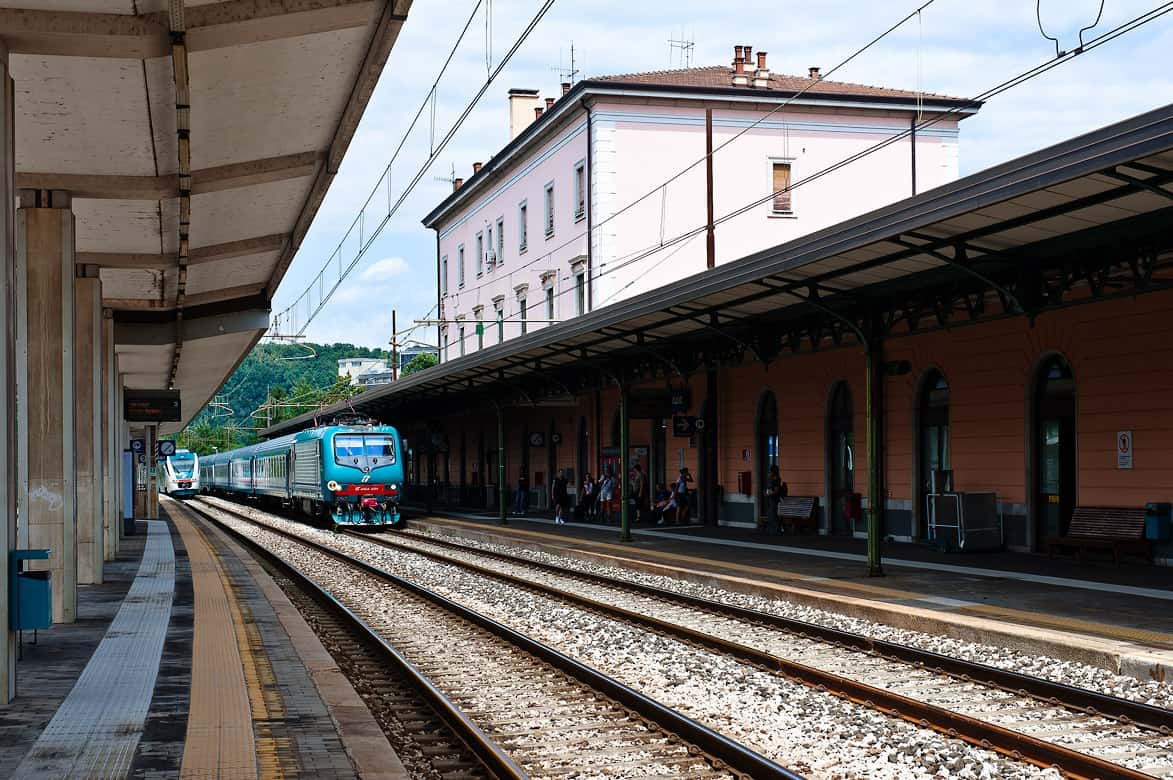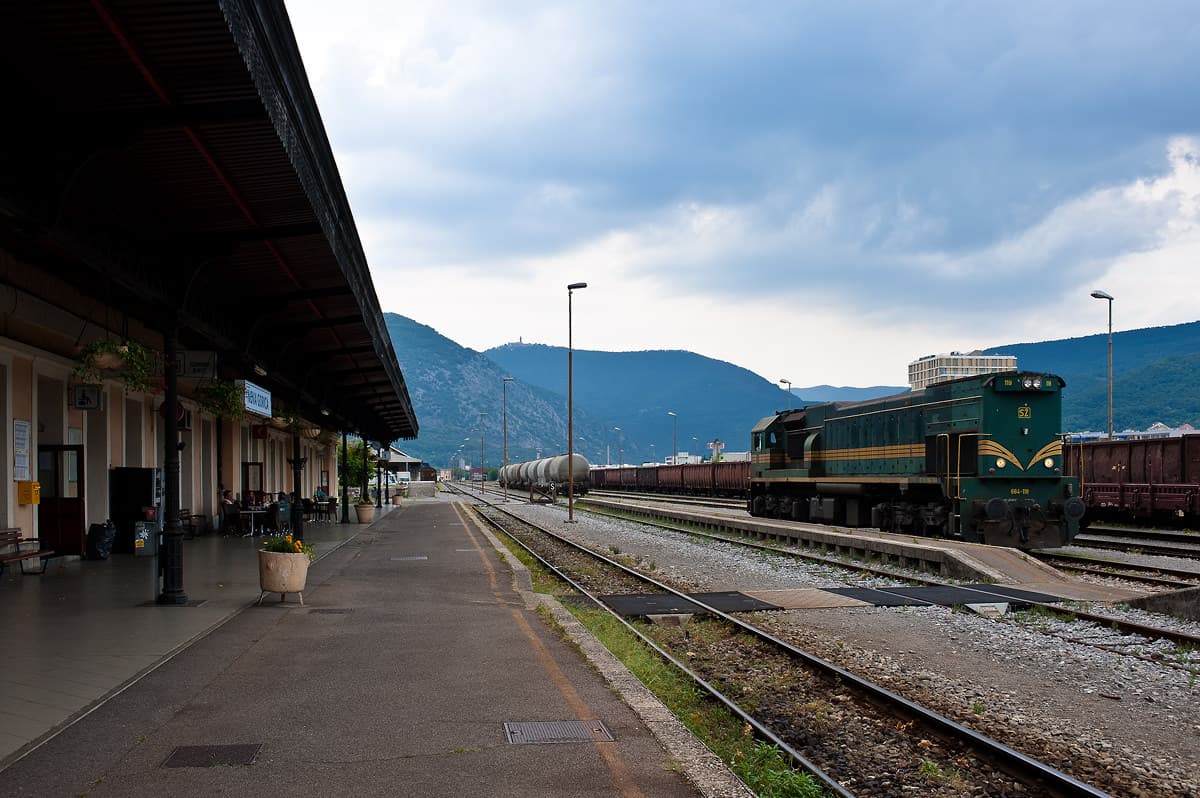Many travellers are struggling to find the best way to go from Italy to Slovenia by train. This is understandable, since at the moment, there are no direct trains between the two countries. However, it is not that difficult to get across the border after all. Below I have explained the different options that you have.
UPDATE: there are now two train connections available. One in the morning and one in the evening from Trieste Centrale to Ljubljana and reverse. Schedules are available at plan.rail.cc or at Slovenian railways. The ticket price for Trieste to Ljubljana is 8 Euro in second class.
Trains from Italy to Slovenia
There are two railway lines between Italy and Slovenia. However, as mentioned above, there are currently to trains running through between the two countries. On the one hand there is the border crossing between Villa Opicina and Sezana. Just a few years ago day and night trains from Venice to Budapest used to run here. Nowadays, trains run from Villa Opicina to Slovenia, but no Italian trains reach the station. The other border crossing is located at the twin city of Gorizia/Nova Gorica. This border crossing is used by freight trains only. Each city has its own railway station but they are served by domestic train only.
At the moment, travellers have to cover part of their trip from Italy to Slovenia with alternative modes of transport. Once you know how to cross the border it is actually quite easy to do and a fun experience as well. Of course we hope that there will be trains connecting Venice with Ljubljana and other cities again in the future. In the meantime, we have to get by with the available options. Find out more about the different way to travel from Italy to Slovenia by train below.
1) Trieste to Sezana
You can go to Trieste with frequent regional trains from Venice and Udine. The fast regional trains take about 1h50 from Venice to Trieste and run every hour. A number of long distance Frecciabianca and Intercity trains from cities such as Milan, Florence and Rome also go to Trieste, as well as the night train from Rome. After you have arrived, you should stroll around the beautiful squares and streets of the city centre. Maybe stop somewhere for a quick coffee or get another delicious Italian Pizza? Definitely do not miss the Mole Audace and Piazza dell'Unità d'Italia if you decide to go for a little walk.
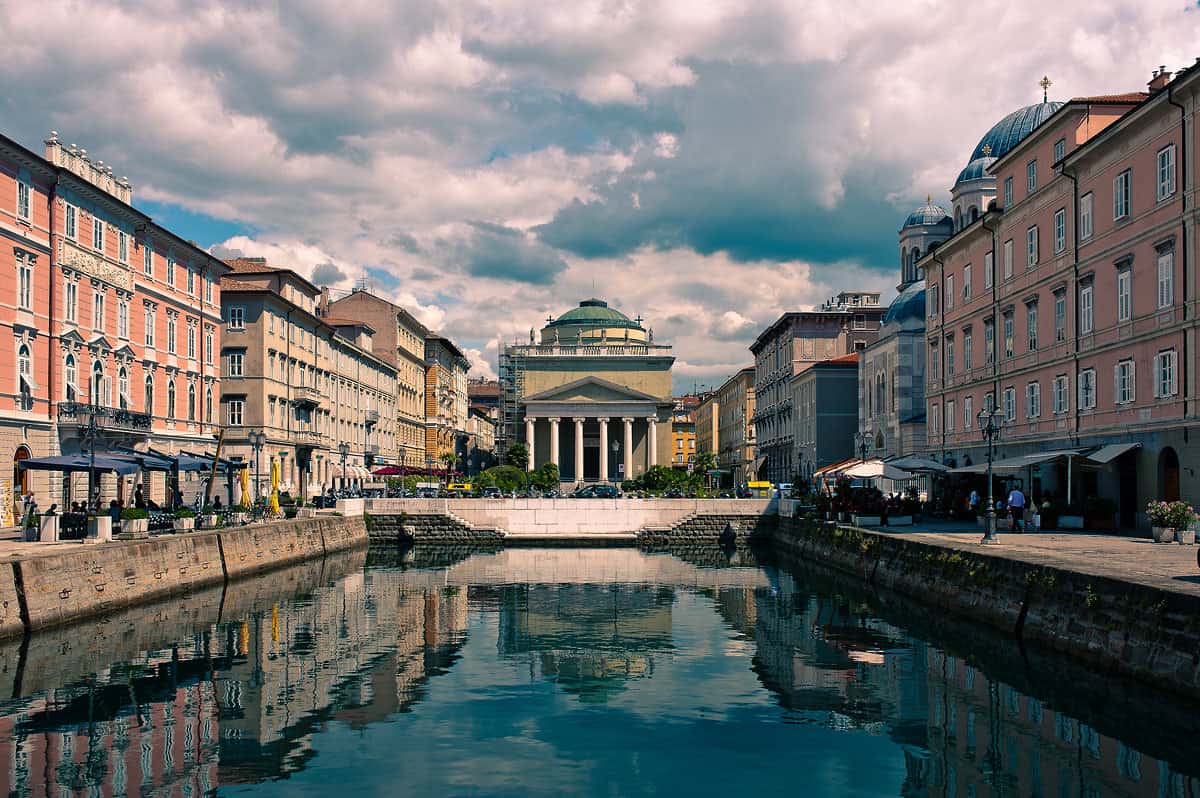
When you feel ready to continue, head for Piazza Oberdan in the north of the city centre. Going there from the train station is really simple. Just exit the station, walk across the park and on the right hand side, continue on Via Carlo Ghega. After about 500 metres you will already see the tramway line - simply follow the line for another 100 metres to its terminus.
The tramway from Trieste to Villa Opicina
You will now take the tramway from Trieste to Villa Opicina. A sight in its own right, this historic tramway connects Trieste on the Adriatic with the village of Opicina high above the bay. In the middle section of the line the tramway is operated as a funicular and the tramways are pushed up the hill by small cable tractors. Once the tramway has reached the plateau above Trieste, it continues towards Villa Opicina. The tramway runs every 20 minutes, a single ticket is 1,35€. Tickets are available at many cafes, bars and tobacconists around the city.
Update: due to an incident the tramway currently does not operate. A replacement bus service is in operation until Spring 2017.
Take a seat in the vintage style tramway and enjoy the ride through the narrow streets of Trieste before the line steeply climbs towards Villa Opicina. Leaving the city behind, the tramway runs through the suburbs, providing nice glimpses over the bay from time to time. From the tramway's terminus at Villa Opicina it takes about 15 minutes to walk to the train station. Walk down Via Nazionale, turn left at the roundabout and continue until you reach Via della Ferrovia on the right hand side. You should now already see the railway line. Walk down Via della Ferrovia until you reach the station.
Villa Opicina to Sezana and Ljubljana
Although Villa Opicina is in Italy, Slovenian Railays (SZ) have decided to operate a number of trains across the border. There are six trains running from Villa Opicina to Sezana. Three of them continue to Ljubljana, while a fourth train has a connection to Slovenia's capital. The two trains late in the evening run only to Sezana with no onward connections. The trains from Villa Opicina to Ljubljana take about two hours, running along the old "Südbahn" railway built by the Austro-Hungarian empire to connect Vienna with the important port of Trieste.
On the way to Ljubljana the train passes throgh Divaca (connections to Pula) and Pivka (connections to Rijeka). It also stops at Postojna, famous for its huge karst cave system. From Sezana you can also take the train to Nova Gorica and onwards to Lake Bled. However, it usually is faster to travel via Gorizia if you are headed to Lake Bled. Read more about this option below.
2) Gorizia to Nova Gorica
Another possibility to get to Slovenia is the border crossing at the twin town of Gorizia/Nova Gorica. Frequent regional trains from Venice via Udine to Trieste call here as well as the night train from Rome to Trieste. Gorizia has a beautiful old town worth spending some time. The city on the other side of the border, Nova Gorica, was only founded in 1947 as the Second World War resulted in a new border between the two countries. From Nova Gorica you have connections to Lake Bled and Jesenice as well as to Sezana.
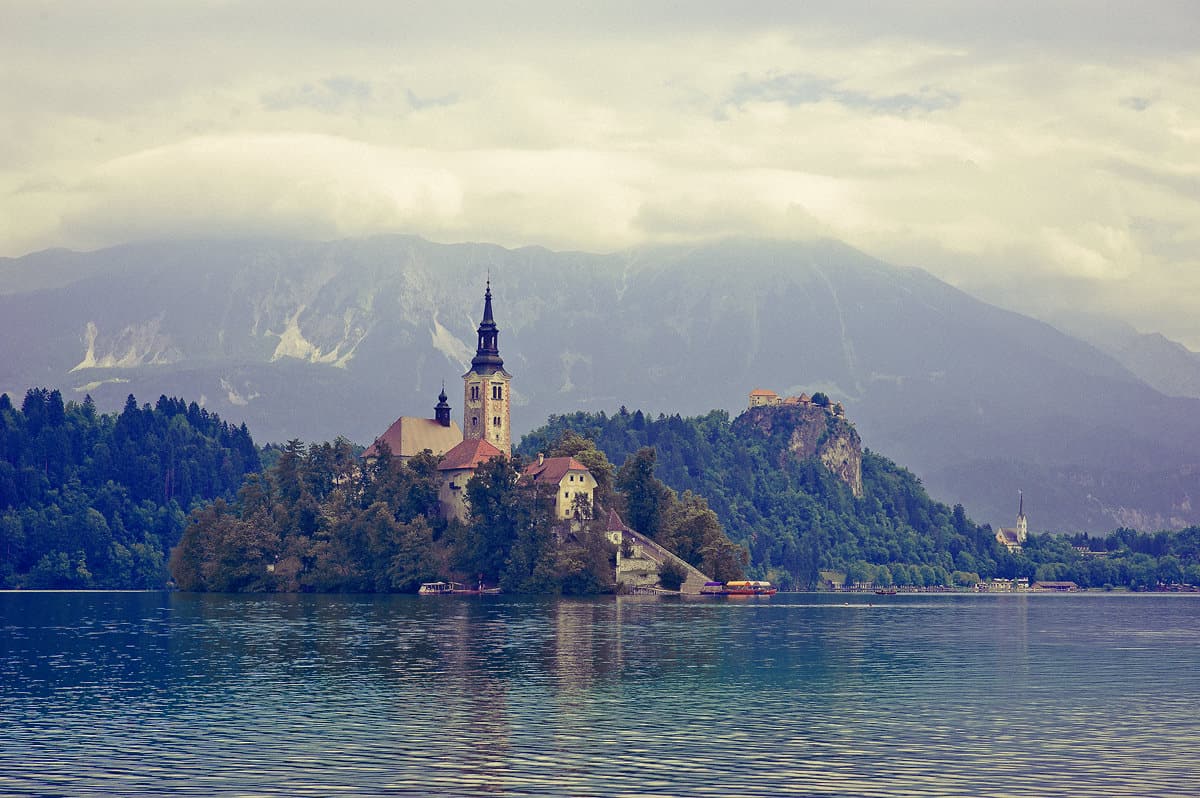
From one station to another
The city of Gorizia is worth visiting too. The massive fortress overlooks the old town with its busy streets and alleyways. If you walk from Gorizia Centrale (the Italian station) to Nova Gorica (the Slovenian station) you could treat yourself with a coffee in the city centre. From Gorizia Centrale, just walk down Corso Italia until you reach the city centre. Continue on Corso Giuseppe Verdi and turn right into Via Francesco Crispi, before turning left into Via Roma. Follow Via Roma, pass the beautiful Piazza della Vitoria and continue on Via Giosue Carducci and Via Silvio Pellico. When you reach the roundabout, turn right into Via San Gabriele and walk towards the border. Immediately after you cross the border, turn left and follow the street until you reach the station.
The walk between the two stations will take you about 45 to 60 minutes without any extra stops along the route. If you want to spend a little time in Gorizia or have lunch, plan with at least two hours. Alternatively you can use public transport to get from one station to another. Bus line 1 runs from Gorizia Centrale to Piazza Transalpina just opposite the Nova Gorica station. Buses run every 12 to 15 minutes from Monday to Saturday and every 45 - 50 minutes on Sundays. There is a second line too, actually running into Slovenia and also serving Nova Gorica station. It runs hourly from Monday to Saturday. Buses are operated by APT and you can get the timetables here.
Nova Gorica to Lake Bled and Ljubljana
From Nova Gorica, trains run on the beautiful Bohinj Railway to Lake Bled and Jesenice. From Jesenice you have connections to Ljubljana and Villach (Austria). Alternatively you can also go to Sezana and continue from there to Ljubljana. However, the connections in this direction are bad, so consider this only if you are a train nerd. ;)
There are several train per day running from Nova Gorica to Lake Bled and Jesenice. The trip to Bled Jezero station takes about 1h45 and follows the scenic Soca valley. You can find more pictures of this trip in the German railcc blog. If you go from Nova Gorica to Ljubljana, you have to calculate between three and four hours for the trip, depending on the connection.
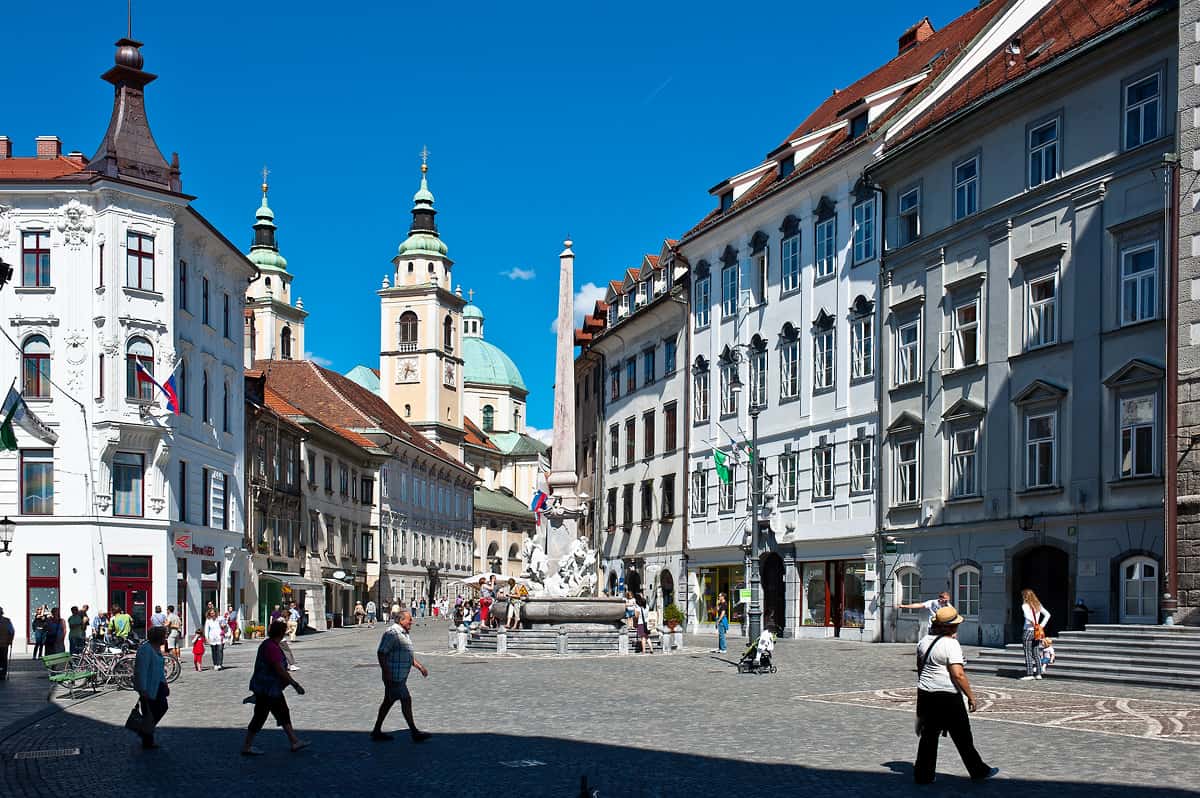
3) Travel via Austria
You can also travel via Austria to get from Italy to Venice. However, this usually requires to use a train with compulsory reservation. Connections during the day are quite bad, resulting in long waits in Villach (Austria). When looking for schedules with a travel planner (see below), these connections are usually shown. Personally, I prefer the other options instead of going via Austria.
4) New direct Bus service Trieste - Ljubljana
Since 2017 a new direct bus service is available between Trieste and Ljubljana. It is jointly operated by SZ (Slovenian Railways) and Arriva. A single ticket is 9€ and includes a seat reservation. International rail tickets, such as Interrail or Eurail are valid. Reservation is compulsory and costs 7€. The buses run twice daily and take just 1h35, thanks to the direct motorway. This is clearly the fastest option to get from Trieste to Ljubljana. Connections from Venice are available by frequent regional trains. The buses call at the bus stations of Trieste and Ljubljana which are adjacent to the train stations. They make no intermediate stops.
Timetables and Tickets
The transfer (on foot) between Gorizia and Nova Gorica is included in schedule planners such as plan.rail.cc. This makes it easy to find connections for instance from Venice via Gorizia to Lake Bled or Ljubljana. Depending on the connection you take, the trip from Venice to Ljubljana takes between 6h30 and 7h15.
If you decide to go via Trieste, you will have to search two different connections. The transfer with the tramway from Trieste to Villa Opicina is not included in the schedule planners. First, look for trains from Venice (or any other city in Italy) to Trieste Centrale. Then, search for trains from Villa Opicina to Ljubljana (or Lake Bled - however if you want to go to Lake Bled it is usually smarter to cross the border at Gorizia). Allow about two hours to get from Trieste Centrale to Villa Opicina station. With the best connection you can travel from Venice to Ljubljana in about 5h45 on this route.
Rail passes (Interrail, Eurail) are valid on all trains and no reservations are required if you go with regional trains. When travelling with regular tickets, you will need single tickets from a city in Italy to Trieste Centrale or Gorizia Centrale as well as from Villa Opicina or Nova Gorica to Ljubljana (or Lake Bled). Additionally you have to buy tickets for the bus or tramway where rail ticket are not valid.
Single ticket fares:
- Venice to Gorizia Centrale: 15,05€
- Nova Gorica to Ljubljana: 9,56€/11,36€ (depending on train)
- Venice to Trieste Centrale: 13,40€
- Villa Opicina to Ljubljana: 8,70€
If you have more questions, feel free to ask here or in the railcc forum. Thank you for reading, have a nice trip!
Update: May 2017
👁 18845

